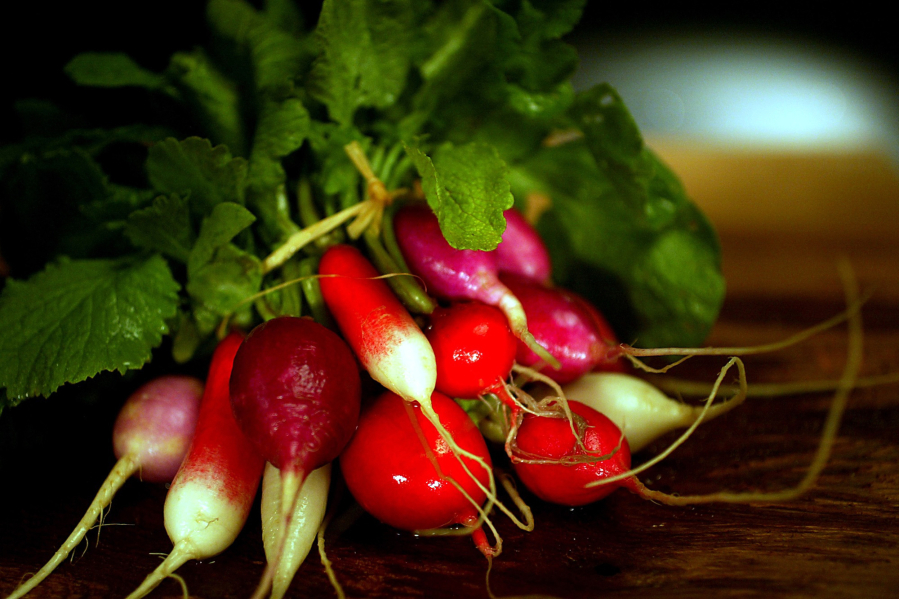The radish does not get the respect that it deserves, unlike some other members of the brassica family, their cruciferous cousins broccoli, Brussels sprouts, cauliflower and kale. But the humble radish is full of surprises — and nutrients!
Egyptians cultivated radishes even before they built the pyramids, and the Chinese recorded eating them as early as 2700 B.C. Ancient Romans and Greeks treasured them as a delicacy, eating them with vinegar and honey. Britons recognized the radish’s medicinal qualities and brought radish seeds with them when they colonized America. Radishes also give you a big nutritional “bang for your buck” — one cup of sliced radish provides 1 gram of protein, 2 grams of fiber, 3 grams of carbohydrates and only 18 calories.
The radish is celebrated in Oaxaca, Mexico, during the legendary Night of the Radishes, on the night before Christmas Eve, when locals present their most elaborate and inventive radish carvings. Can you imagine a life-sized nativity carved from radishes? Originally intended as a way to decorate produce stands and attract Christmas shoppers, the festival now attracts more than 100 participants, and thousands of tourists and locals alike wait hours for a glimpse at the carved scenes.
There are many varieties of radishes; they can be round, cylindrical or tapered to a point, like a carrot. Their size varies from a half-inch up to more than a foot long. They can be black, white, yellow, green, purple and even red! Flavor ranges from mild to peppery hot.
The most common radish in the U.S. is the red, round salad radish, usually one-half to 2 inches in diameter. It has a bright white interior and is usually eaten raw in salads or veggie trays.
Another popular variety is the white daikon, a long tapered root, with a sweet, tangy flavor. The daikon’s flesh is crisp, juicy and white and is a staple in Asian cooking.
When buying radishes, make sure they are not too large, or they could be hollow or pithy. Look for fresh green tops that are not wilted. Radish greens can be used in salads or used in cooking, like spinach or beet greens. Radish tops don’t stay fresh for very long, so separate them from the roots soon after bringing them home from the market. Wash and store the leaves like other salad greens and eat them within a day or two.
Keep the roots wrapped in plastic in your vegetable crisper up to one week, and wash them well before serving. Radishes can be soaked in ice water to increase their crunch.
Raw radishes add a crispy zing to salads, slaws and sandwiches or served as a snack with a sprinkling of salt or a dab of butter.
Cooking radishes also tones down the peppery flavor, while leaving plenty of sweet, earthy flavors. Roast them with other root vegetables for a delicious side dish, boil or steam as you would carrots or add to soups and stews. I like to braise them in butter or a little oil for a low-carb substitute for a side of potatoes. The versatile radish can also be pickled or dehydrated.
For additional recipes and serving suggestions, check out Chef Scotty’s Market Fresh Recipes at http://ext100.wsu.edu/clark/?p=8163
Equivalents
1 pound of radishes = 1 3/4 cups sliced
1 pound of red salad radishes = 27
1 bunch of red radishes = 1 cup sliced
Judi Seifert is a Clark County WSU Extension Master Food Preserver. For additional recipes, food preservation and food safety information visit http://ext100.wsu.edu/clark/?p=1134. Have questions? Call MFP Helpline: 360/397-6060 ext 5366, or join Facebook Discussion Group “WSU Home Food Preservers – Clark County.”



